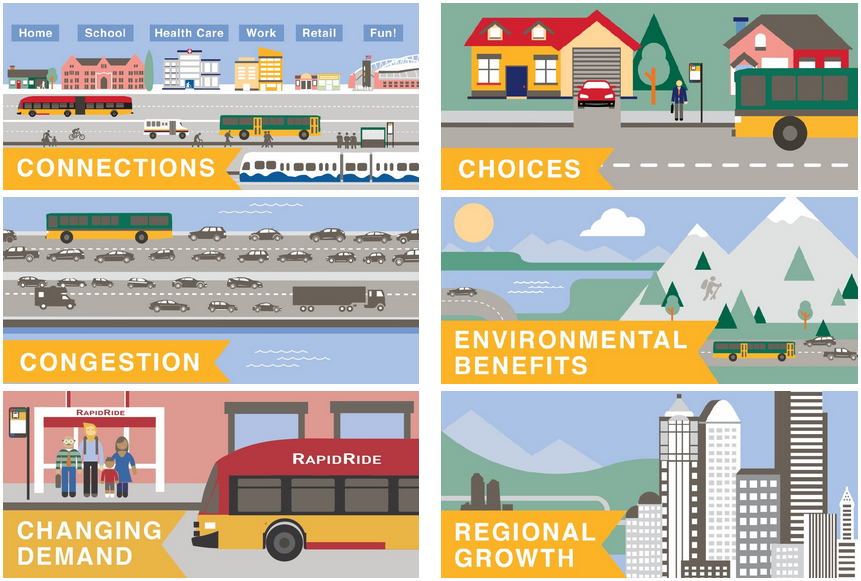
King County Metro Transit just launched a comprehensive planning effort to chart a new vision and direction for the agency. Metro recognizes that transit will continue to play an instrumental role in moving people, reducing congestion, and driving the region’s economy. Of course, no transit system stays the same forever. Metro wants to lay the groundwork for growth and change in the future by planning now. To do this effectively, the agency hopes to a develop a plan that will analyze a 25-year period. The agency also plans to engage a wide range of stakeholders–like riders–to inform the goals, policies, strategies, and investments that will be outlined in the final plan
To give a bit more context, here’s how Metro describes the planning effort:
With King County growing fast, it’s time to lay the foundation for a public transportation system that moves more people and moves them better. What should our transit system look like in 25 years? How can we support our economy, our environment, and the people who live here? How will Metro integrate with the expanding light rail system? These are the kind of questions that captured the imagination of civic leaders years ago, and their vision led to the public transportation system we rely on today. Now it’s time to imagine a new future.
Metro’s long range plan will present a shared vision for a future public transportation system that gets people where they want to go and helps our region thrive. The plan will describe an integrated network of transportation options, the facilities and technology needed to support those services, and the financial requirements for building the system. It will be developed in close coordination with Sound Transit and other transportation agencies.
Over the next two years, Metro will work with transit riders, cities, community groups, and motorists to shape a long-range plan for meeting our region’s growing and changing public transportation needs.
Metro has put together a website to introduce the public to the long-range planning effort. At the moment, it is a bit sparse with content, but as the project moves forward, Metro will continue to add to it. Now is the time to help shape the long-range plan. Getting involved is easy: you can take a short survey, provide comments, or throw your name in the hat to join a community advisory group.
Stephen is a professional urban planner in Puget Sound with a passion for sustainable, livable, and diverse cities. He is especially interested in how policies, regulations, and programs can promote positive outcomes for communities. With stints in great cities like Bellingham and Cork, Stephen currently lives in Seattle. He primarily covers land use and transportation issues and has been with The Urbanist since 2014.



